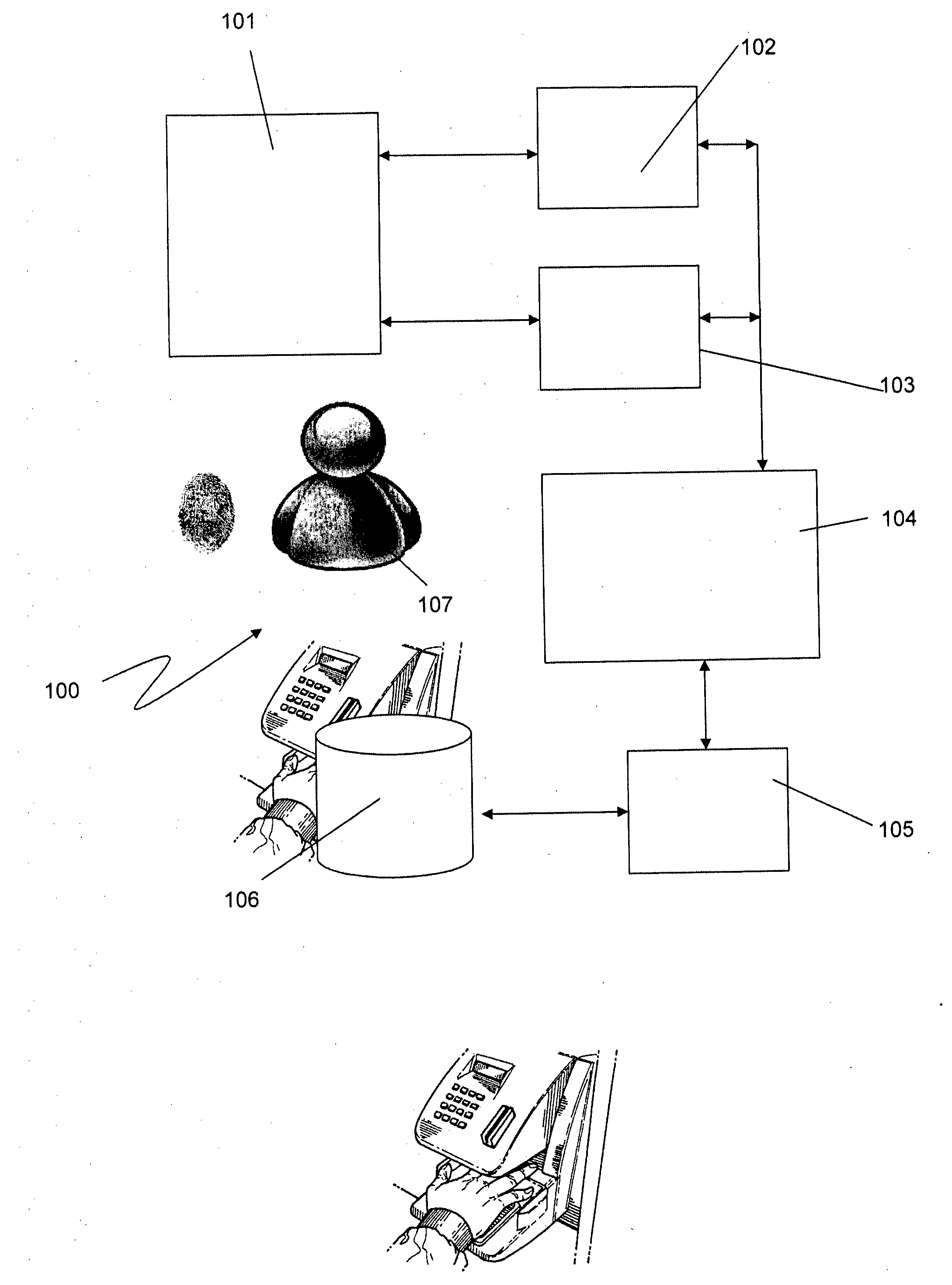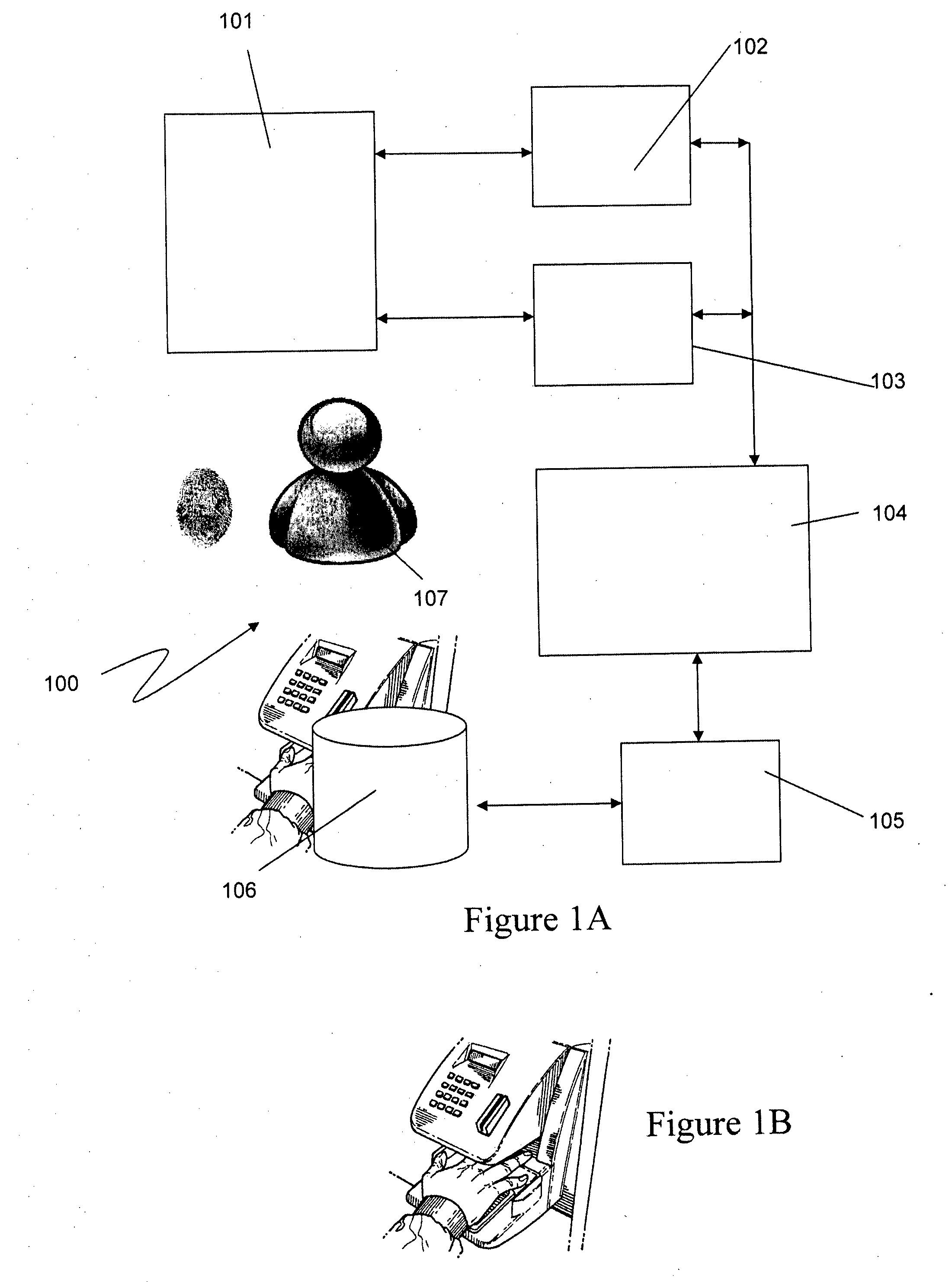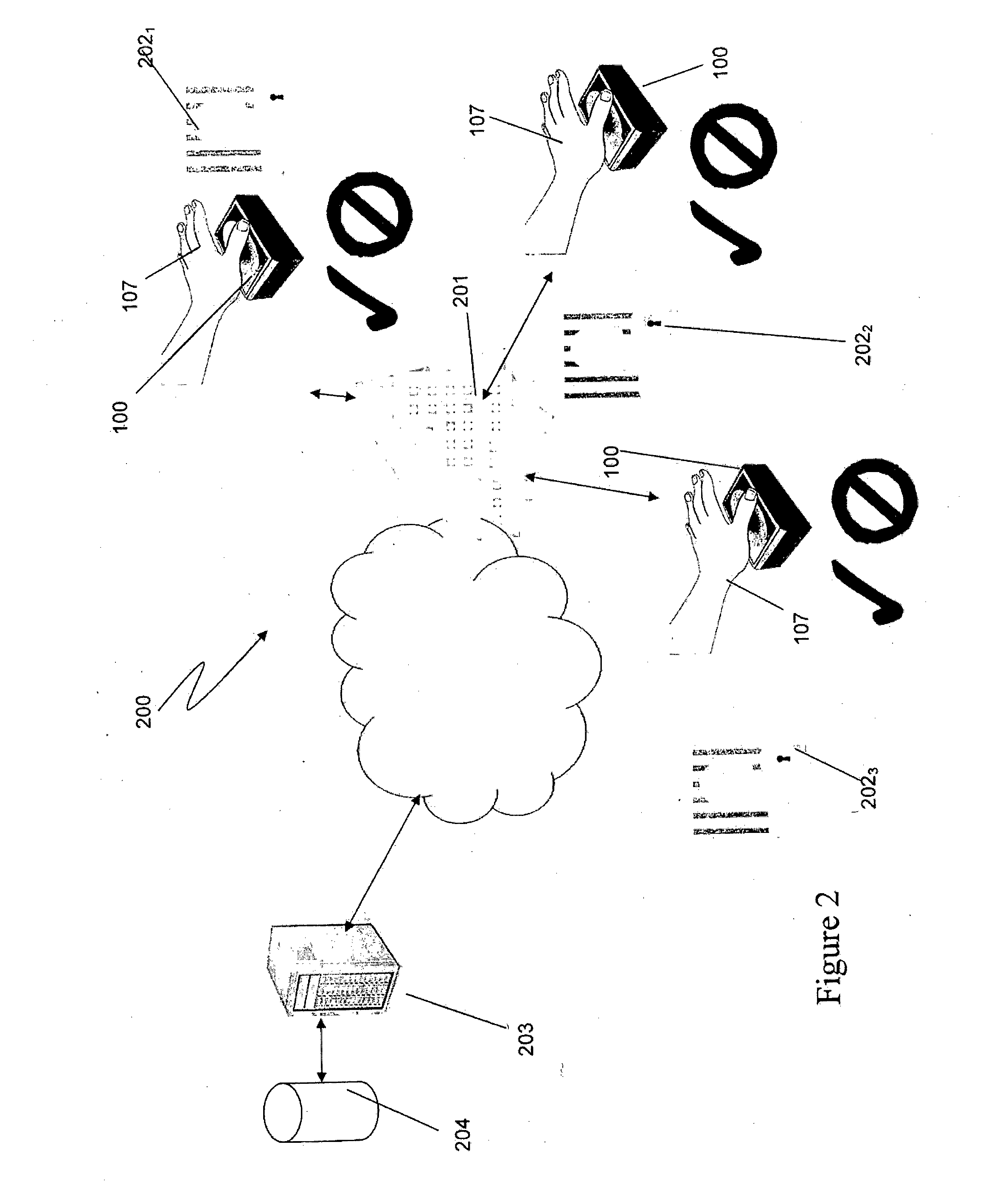System and methods for identification and fraud prevention
a fraud prevention and system technology, applied in the field of system and method for fraud prevention, can solve the problems of affecting the accuracy of the method, affecting the overall system performance, and affecting the application, so as to achieve rapid and effective treatment and effective medical treatment
- Summary
- Abstract
- Description
- Claims
- Application Information
AI Technical Summary
Benefits of technology
Problems solved by technology
Method used
Image
Examples
Embodiment Construction
[0035]With reference to FIG. 1, there is illustrated one possible configuration of a biometric scanner 100 according to one embodiment of the present invention. As shown, the scanner 100 includes a sample input 101 typically in the form of a plate or the like onto which a user 107 is required to place their palm, finger, etc. (sampled region) onto the plate or in close proximity to the plate for scanning. The biometric information in this instance is obtained via the use of an infrared or near infrared scanner 102 and ultrasonic scanner 103.
[0036]In this particular example, the scanner is configured to identify two differing tissue types. In this case, the infrared or near infrared scanner 102 is utilised to identify a first vessel type (vein) while the ultrasonic scanner 103 is used to identify a second vessel type (arteriole). More specifically, the infrared or near infrared scanner 102 is utilised to locate venous vessels (i.e. veins) and the ultrasonic scanner 103 is utilised to...
PUM
 Login to View More
Login to View More Abstract
Description
Claims
Application Information
 Login to View More
Login to View More - R&D
- Intellectual Property
- Life Sciences
- Materials
- Tech Scout
- Unparalleled Data Quality
- Higher Quality Content
- 60% Fewer Hallucinations
Browse by: Latest US Patents, China's latest patents, Technical Efficacy Thesaurus, Application Domain, Technology Topic, Popular Technical Reports.
© 2025 PatSnap. All rights reserved.Legal|Privacy policy|Modern Slavery Act Transparency Statement|Sitemap|About US| Contact US: help@patsnap.com



